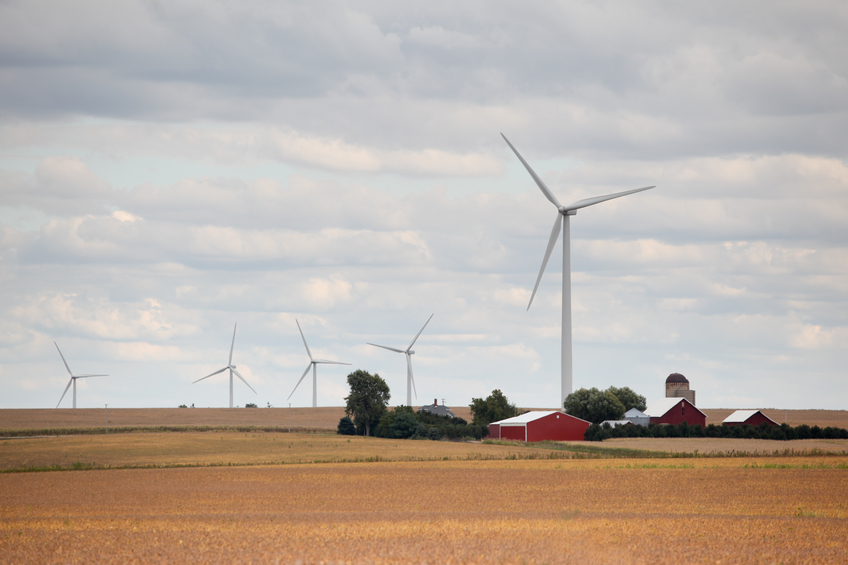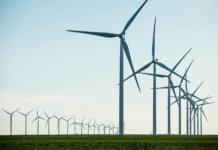The American Wind Energy Association's (AWEA) WINDPOWER 2007 conference in early June provided the association with a platform to delineate both the extensive growth of wind power in the U.S. and a realistic road map for achieving higher levels of wind penetration. Key among the elements that make up this map is the dichotomous role of transmission as a market constraint and driver – a role that could, under one scenario, ensure that offshore wind power delivers nearly 3% of all U.S. electric demand.
   Randall Swisher, executive director of AWEA, opened the conference in Los Angeles, which AWEA reports drew an attendance of 7,000 people and about 400 exhibitors, with a collaborative vision statement in support of the conference theme "Growing the Wind Energy Business."
   The statement reads, "Wind energy can provide 20 percent of U.S. electricity needs by 2030, securing America's leadership in reliable clean energy technology. As an inexhaustible and affordable domestic resource, wind energy strengthens our energy security, improves the quality of the air we breathe, slows climate change and revitalizes rural communities."
   Swisher told attendees that the 20% vision "is not an easy target" and "there are many barriers" to achieving it. AWEA's board of directors, Swisher added, has approved a five-year action plan that will build a foundation for the 20% vision. The plan defines key barriers to successful wind power development, including impacts on wildlife, unstable policy support and transmission constraints.
   As part of the plan, AWEA's board approved the creation of a Wind Wildlife Institute to investigate the interaction between wind power development and wildlife. In addition, AWEA representatives encouraged conference attendees to participate in the association's ongoing advocacy of the industry's legislative priorities, such as a production tax credit extension beyond 2008 and a national renewable portfolio standard.
   Other barriers to industry expansion were discussed in a two-part session called "Expanding the Wind Industry: Wind Vision Initiative," in which panelists presented findings of an initiative launched last year to develop a scenario for fulfilling the 20% vision. The findings of this collaborative initiative between the wind industry and the U.S. Department of Energy will be released in a report this summer.
   The session's panelists – also the co-authors of the report – explained that the report is based on a model derived from current market factors, of which transmission was identified as the greatest challenge to onshore development due to high costs.
   However, in a conversation with NAW, Mike Robinson, deputy director of the National Renewable Energy Laboratory's National Wind Technology Center and author of the report's technology segment, explained that the comparatively low cost of transmission for offshore development makes the offshore sector an attractive option for the industry. One scenario developed for the report calls for 325 GW of installed wind power in order to reach 20% penetration. The research model estimated that, of the 325 GW, 12% would be provided by offshore wind farms. These figures, however, reveal only one possible scenario for the market.
   "If you choose a different set of modeling parameters – a lower cost trajectory for offshore, for example – as much as 50 percent of the 20 percent goal could come from offshore development," says Robinson. With offshore wind power, he notes, projects inherently have a "close proximity to load centers," which reduces the cost of the transmission that brings offshore wind farm electrons to market.
   In a dollars-per-MW cost comparison between onshore and offshore technology, offshore technology currently is the more expensive option. The lower price of per-project transmission development, however, can make offshore wind power cost-competitive.
   "That's the whole impetus and driver for the offshore market at this point," says Robinson.
   Initial offshore deployment, he adds, will be based on shallow-water technology, nearly 1 GW of which has been installed in Europe. Deep-water technologies (e.g., floating wind farm platforms) still are in the investment and testing phases. Norway-based energy company Hydro, for example, announced June 26 that it will cooperate with Siemens Power Generation to develop floating wind turbines using Hydro's Hywind concept. No date was announced for deployment of Hydro's demonstration unit planned for the Norway coast.
   Currently, Robinson notes, regulatory issues are the principal barriers to U.S. offshore development.
   "Having the Minerals Management Service (MMS) identified as the lead agency for offshore wind was a huge step forward," he says. "They are systematically ferreting out the issues and coming up with the approach that is going to be the most appropriate based on their experience." Guidelines for offshore project permitting are not expected to be released by MMS until later next year.
© Copyright Zackin Publications Inc. All Rights Reserved.



